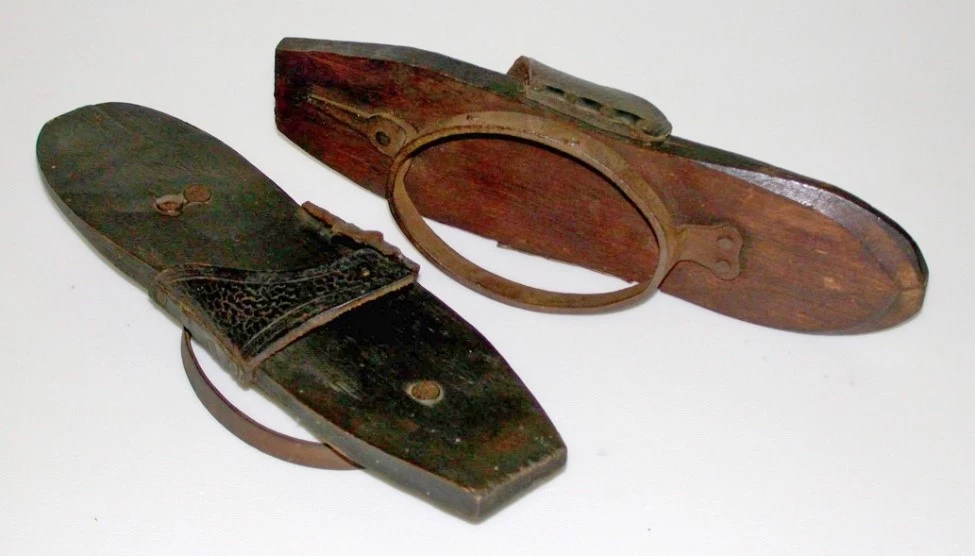Part of a series of articles titled Valley Forge Underfoot - Shoes of the Encampment.
Next: Supply Challenges
Article
Part One of a five-part series about the footwear worn during the Valley Forge winter encampment.
During the 1777-78 winter encampment at Valley Forge the weather and conditions were primarily rain and mud, but it did snow as well. Officers, soldiers, and camp followers often had to walk on frozen muck that was sometimes slick and sometimes rough. What sort of footwear did they have for this terrain?
About 250-400 women followed their male loved ones here. Most women’s shoes had fabric uppers. Women wore pattens over their shoes to raise them off the ground and prevent damage when walking outside. In the photograph below, you can see an original pair of pattens from the park’s collections.

NPS Photo

NPS Photo
What about the soldiers? Usually, they wore common, straight-last cowhide leather shoes.
They did not have dedicated winter shoes, per se, but they could gain increased traction by adding heel plates, metal hobnails (short nails hammered into the heel), or even ice creepers.
In the photograph to the right, you can see how ice creepers have spikes on them. The buckle went over the shoe and fixed the spikes to the bottom, just in front of the heel. Due to supply issues however, few soldiers had the opportunity to use accoutrements like these. Read the next article in the series to learn more about the challenges of supplying the Continental Army during wartime.
Part of a series of articles titled Valley Forge Underfoot - Shoes of the Encampment.
Next: Supply Challenges
Last updated: January 12, 2022